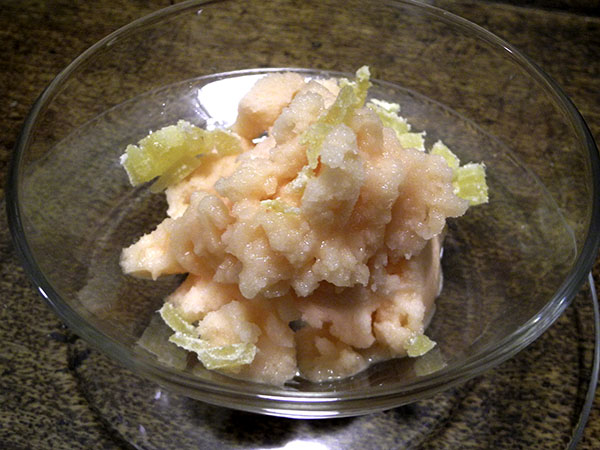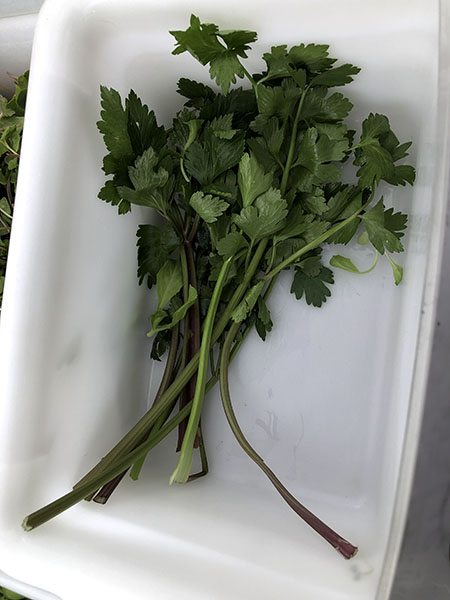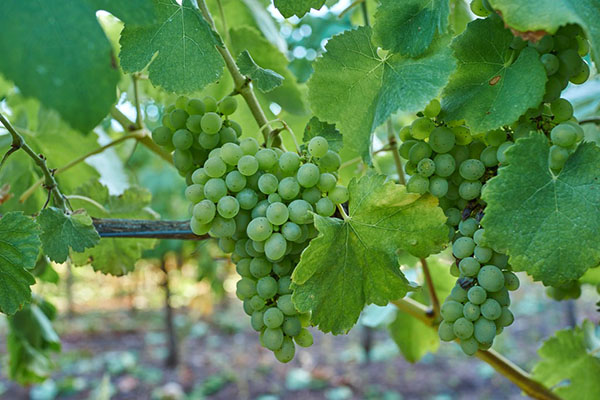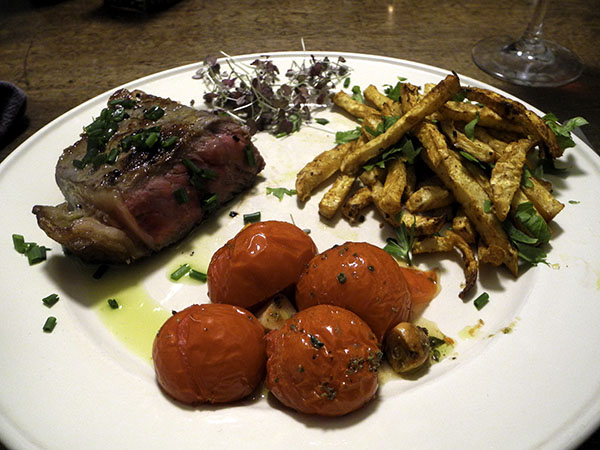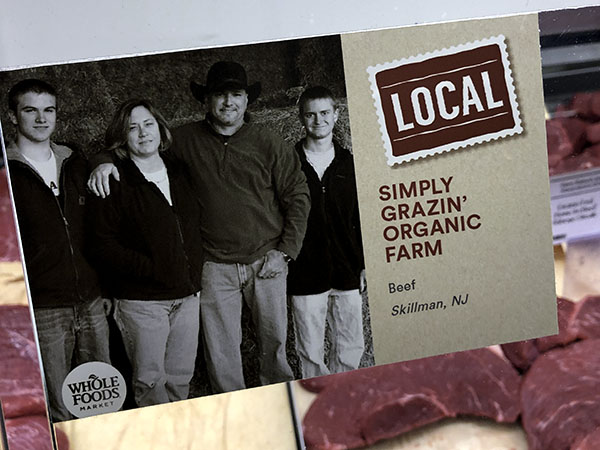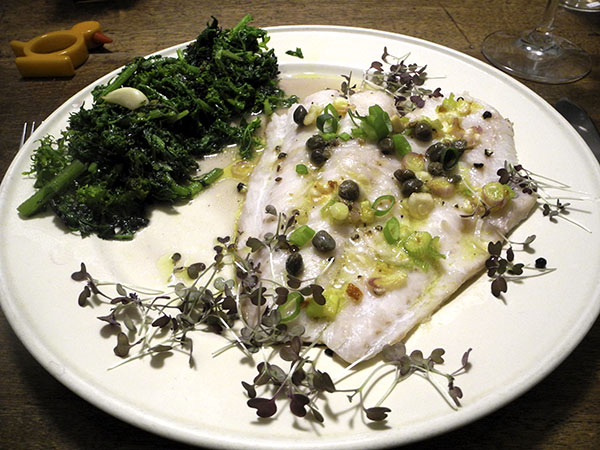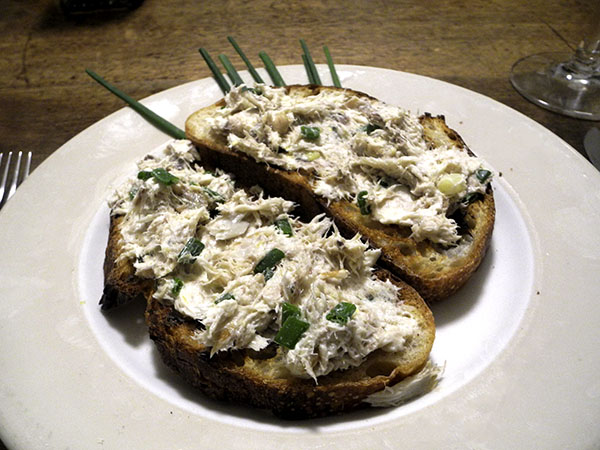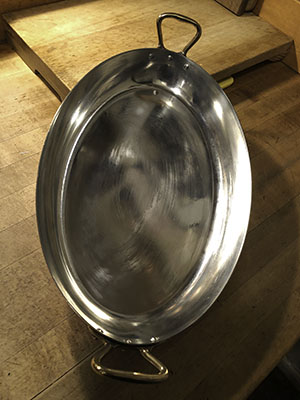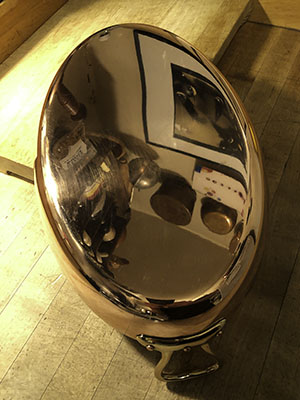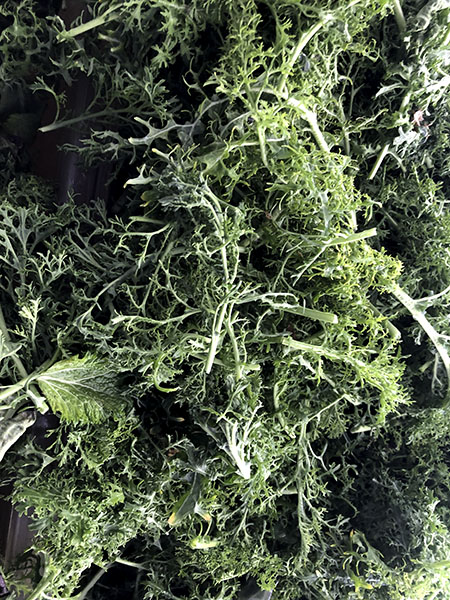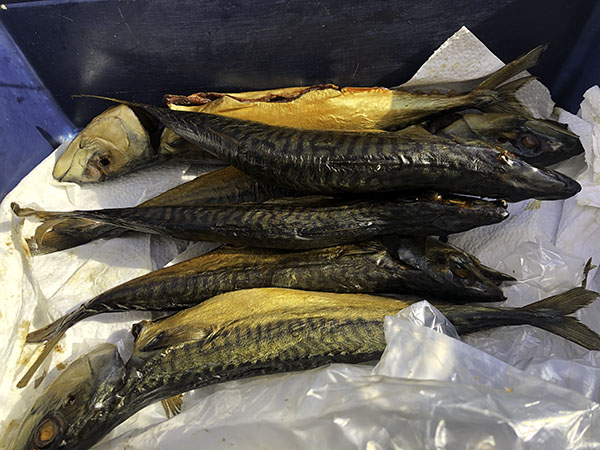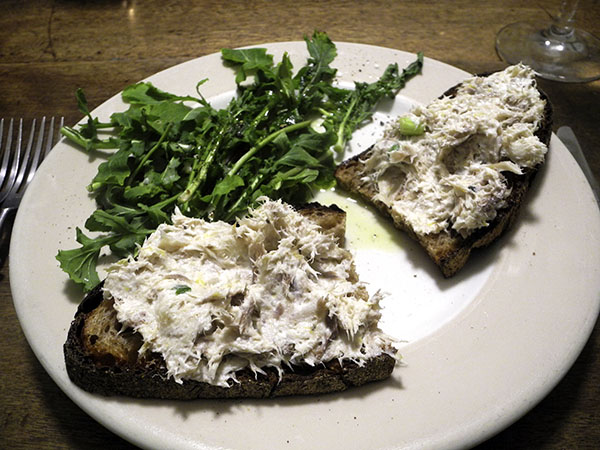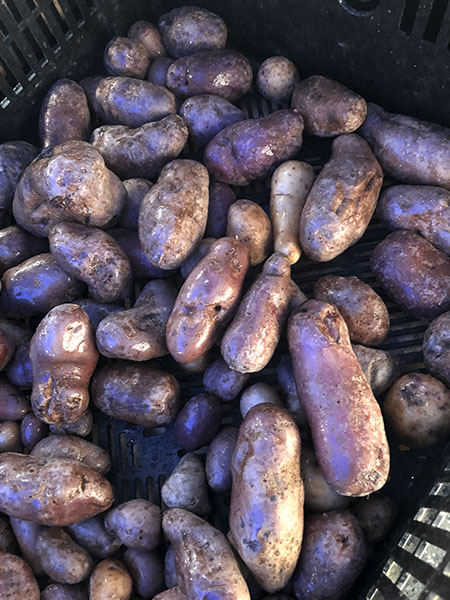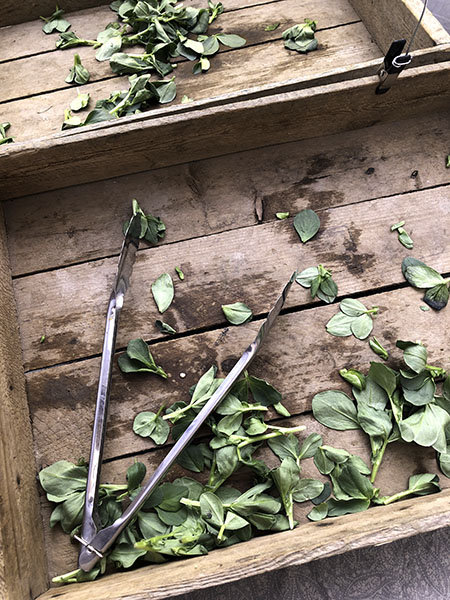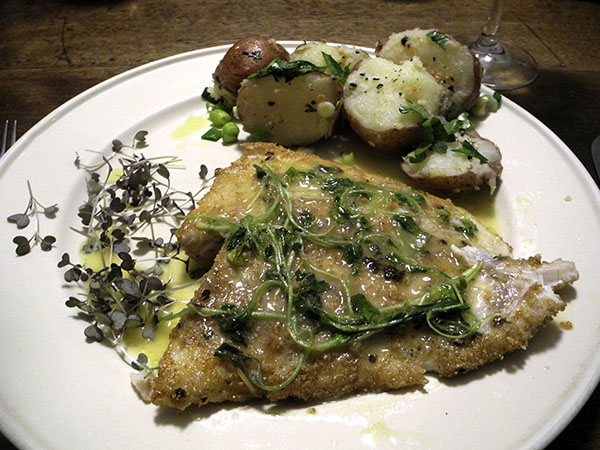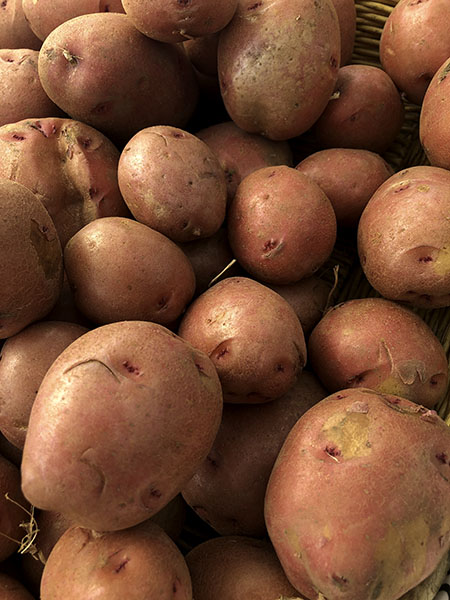
I had bought two packages of smoked fish salad at the Union Square Greenmarket on Saturday, thinking we’d need that much for 4 people, but we only opened one of them that night. The 2 of us would share the contents of the other container on Monday and Tuesday.
- a composed smoked fish salad, or pâté, using local fish caught by Phil Karlin, whose wife, Dolores Karlin, made it, consisting of more than one white fish species, mayonnaise, red onion, and celery, from P.E. & D.D. Seafood Company (the salad was perfectly seasoned), served on slices of a loaf of ‘table bread’ from Philadelphia’s Lost Bread Co. that had just been toasted over an open gas flame on our ‘Camp-A-Toaster’
- leaves of loose small arugula from Norwich Meadows Farm, dressed with some very good unfiltered olive oil from the 6th Avenue Trader Joe’s, Maldon salt, freshly ground black pepper, and a drizzle of organic lemon juice from Chelsea Whole Foods Market
The main course, however, was all new. It was dominated by seafood as well, which, coincidentally, had come from the same fishers who had brought us both the fish in the pâté and the cod we had enjoyed on Saturday.
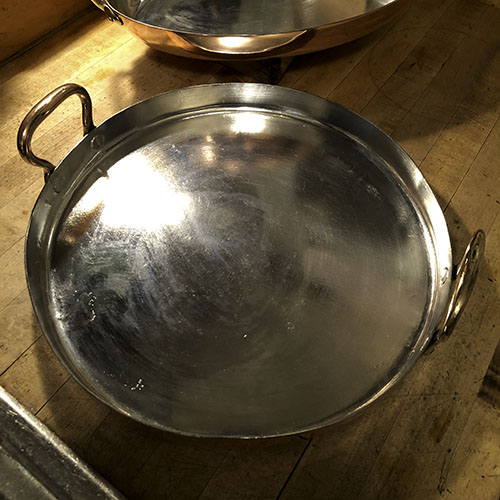
Also new – and quite old – was the very large tin-lined copper pan I used to cook the fish. Although they weighed barely a pound altogether, the area the fillets would occupy was larger than any pan surface I had (that is, other than a pretty enormous, beautifully-seasoned carbon steel long-handled fish skillet, which I could have used, since there would be no acid involved in the cooking).
The new pan was a triumph.
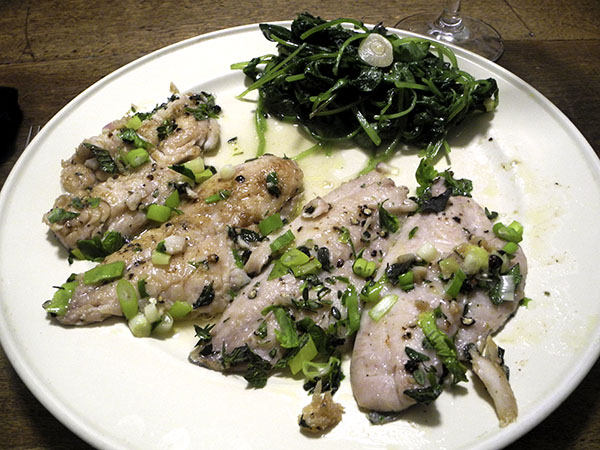
- eight small (2-ounce) Porgy fillets from P.E. & D.D. Seafood, rinsed, dried, seasoned with sea salt and freshly-ground black pepper, pan-seared, along with 4 small thinly-sliced Japanese shallots from Norwich Meadows Farm, over medium heat inside a newly-acquired and newly-retinned 13″-round shallow antique copper pan in a bit of butter and a little olive oil, the fish basted with the contents of the pan more or less continually for about 2 minutes, using a small brush, then carefully turned over, and the heat reduced to low, a cover placed on the pan (I used a new, tempered-glass universal lid that almost fit snugly between the handles) and the filets cooked for about about another 2 minutes before the cover was removed and a mix of 2 or 3 tablespoons of 7 different fresh herbs thrown in (this time I used thyme and spearmint from Chelsea Whole Foods; parsley from Norwich Meadows Farm; lovage from Two Guys from Woodbridge; oregano from Phillips Farms; tarragon from Flatiron Eataly; and basil from a friend’s indoor garden), after which the basting was continued for about minute, or until the fish was cooked through, the fillets then arranged on the 2 plates, the pan juices and scallion fragments, together with the juice of one organic Whole Foods Market lemon, poured over the top, and a few chopped green segments of scallion scattered over everything (the recipe has been slightly modified from one written by Melissa Clark)
- the greens from 2 bunches of French breakfast radishes purchased from Eckerton Hill Farm (most of the radishes themselves had been enjoyed at the beginning of the meal on Saturday)
- the wine through both courses was a Spanish (Galicia) white, Valdesil, Godello ‘Montenovo’ 2017, from Flatiron Wines [more about the area, ‘the golden valley’, including a picture of the vintner, Borja Prada, who is interviewed here (we love Galicia)]
There was a dessert this time, which is something of a rare occurrence at our table.
- small dishes of delicious La Loos goat milk ice cream, ‘Snowflake vanilla’, from Chelsea Whole Foods

- the music throughout was Rossini’s beautiful 1814 opera buffa, ‘Il Turco In Italia’, Riccardo Chailly conducting the Milan Teatro alla Scala Orchestra and the Milan Teatro alla Scala Chorus (the composer was 22 at the time it premiered; it was first staged in New York City in 1826
[the image above, a portrait of Gioacchino Rossini in a super dressing gown, or banyan, by an unidentified artist, is apparently from the Theaterwissenschaftliche Sammlung – Universität zu Köln, via Pinterest (which does not load)]
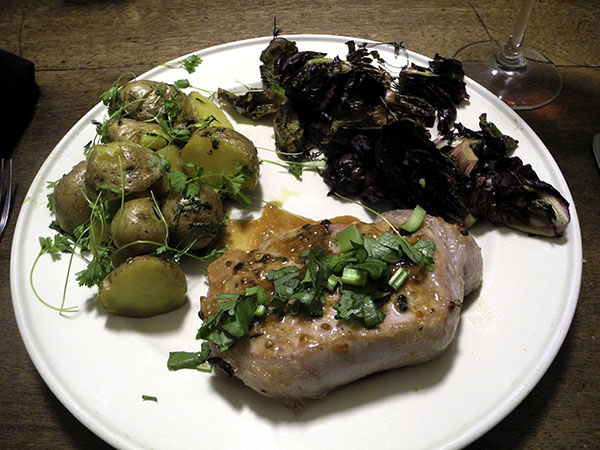
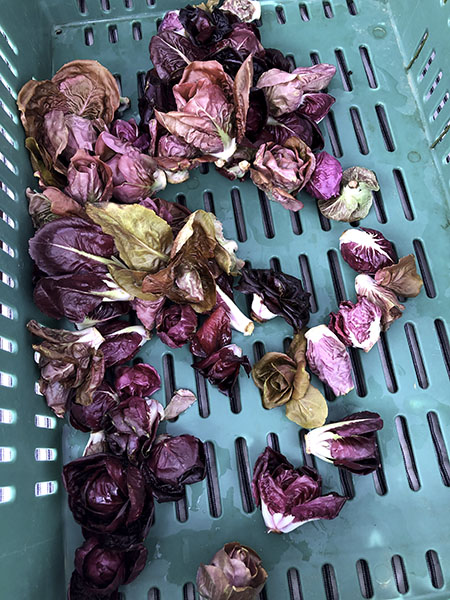




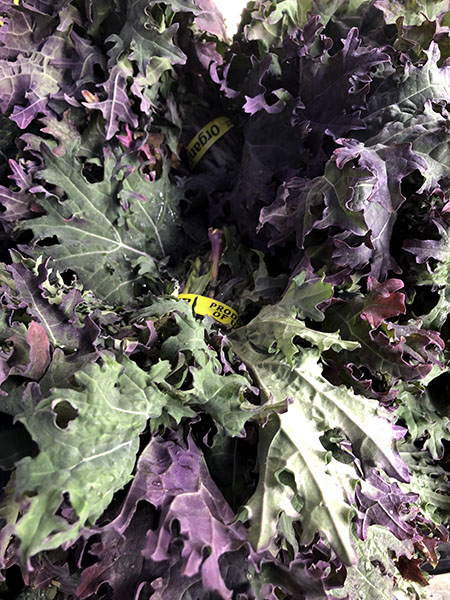 \
\